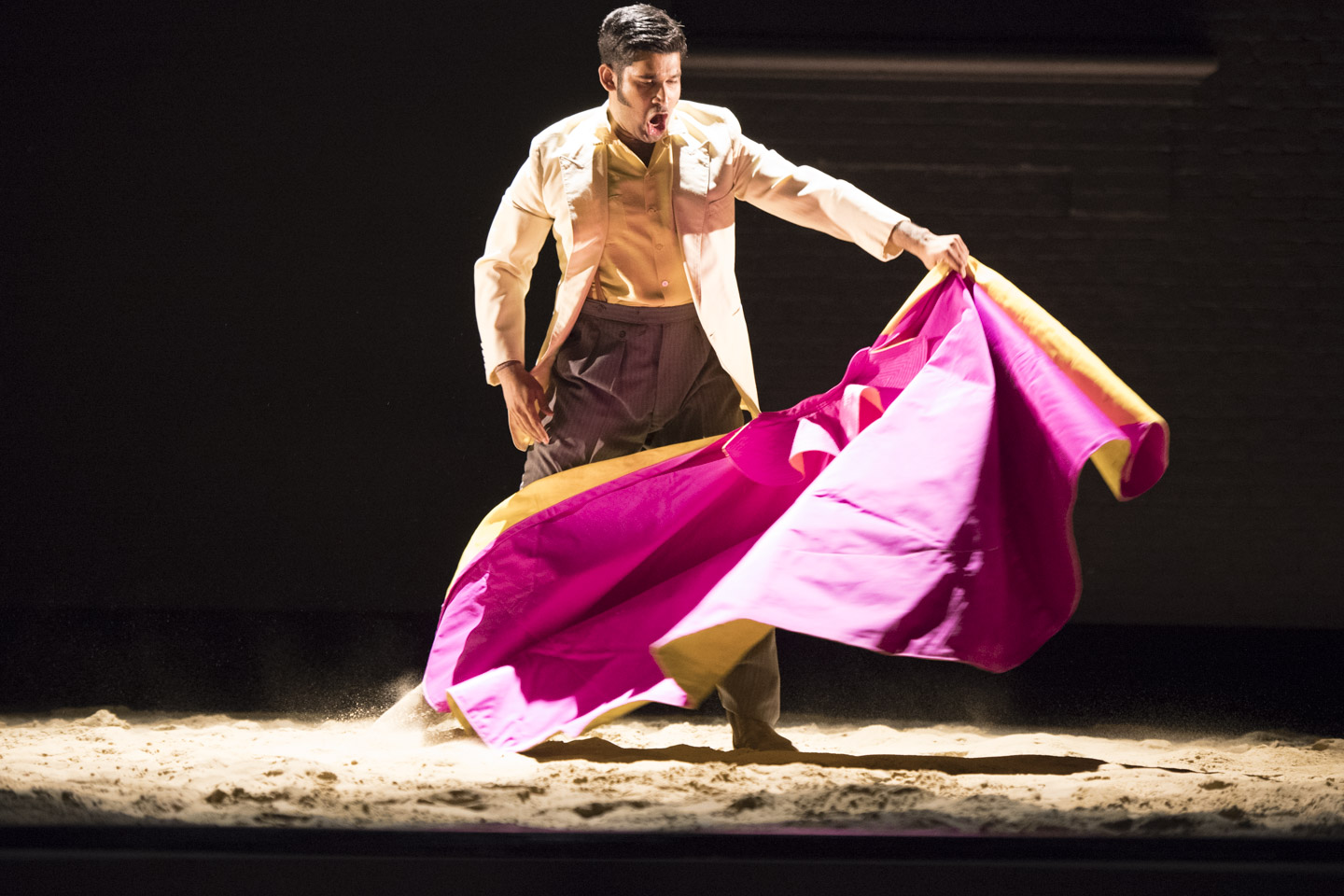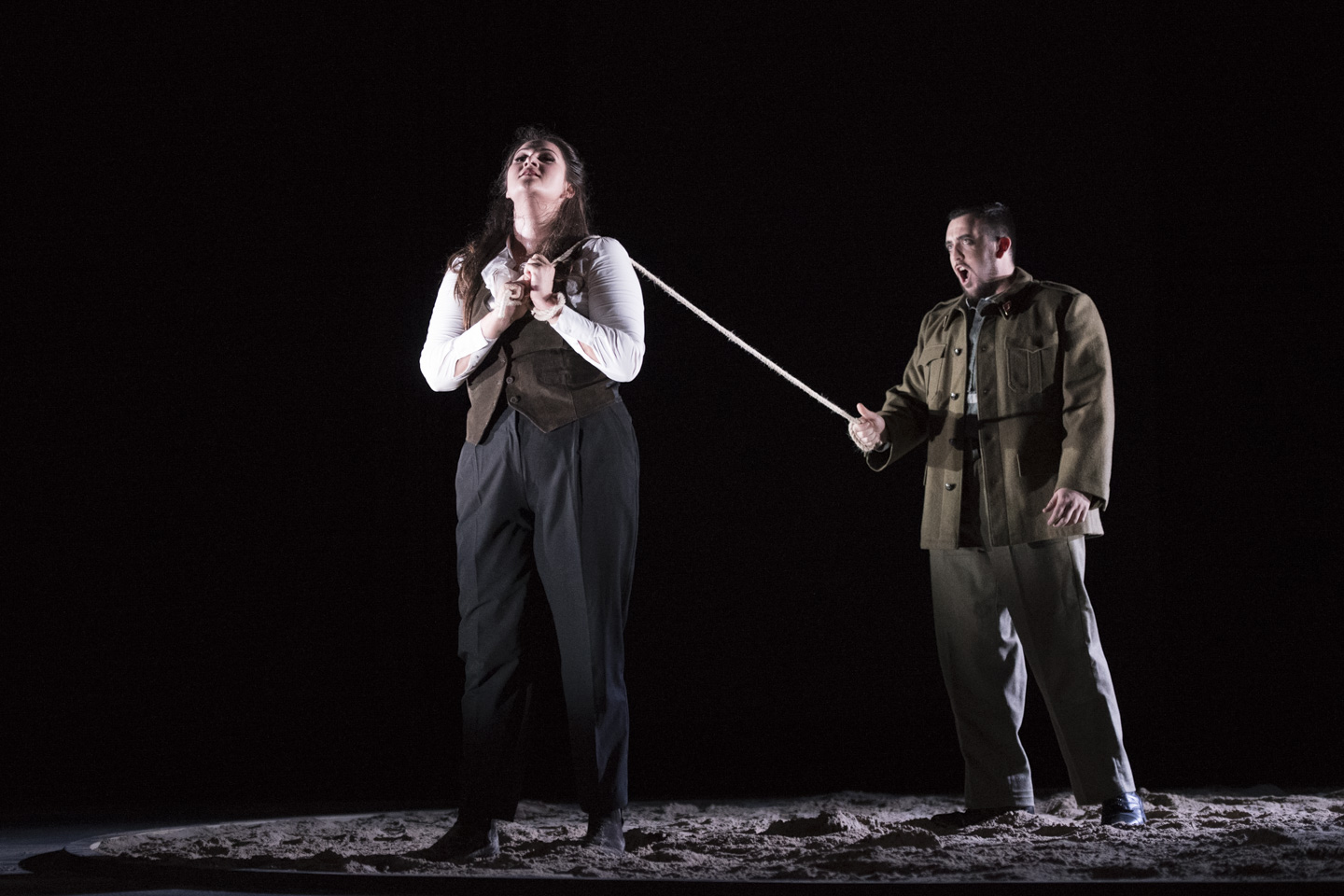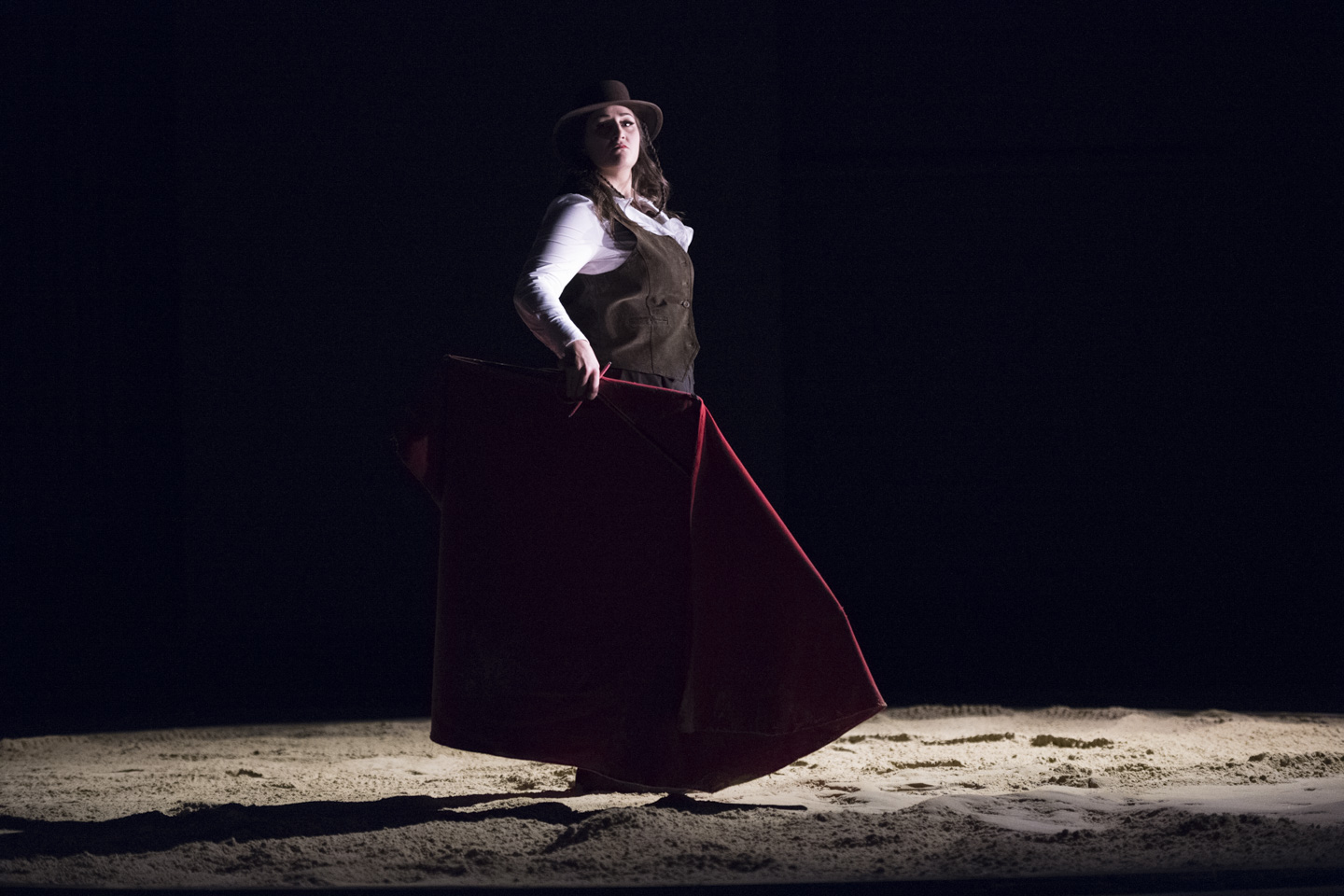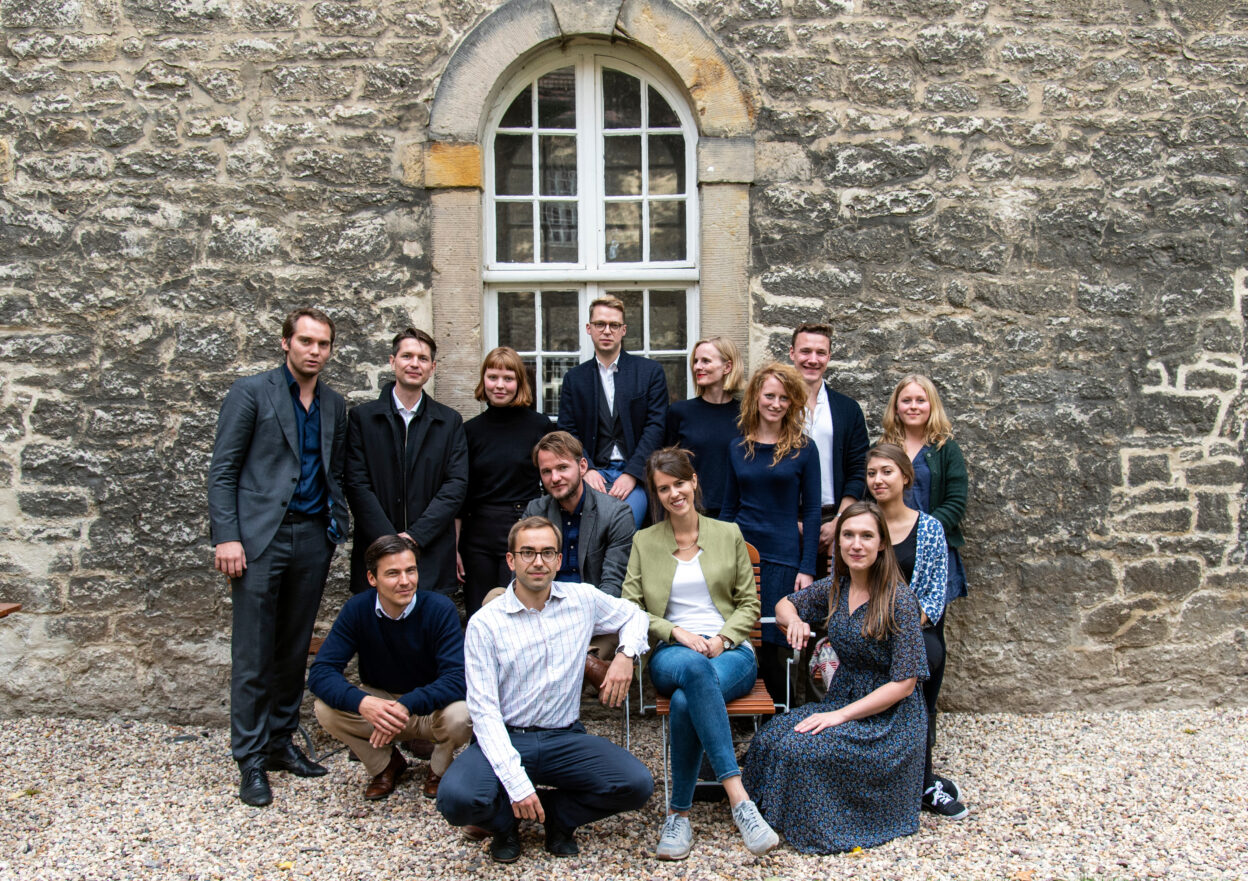In November 1981, at the Théâtre des Bouffes du Nord, his professional home in Paris’ 10e
arrondisement, Peter Brook, English theatre’s most renowned European emigrant, premiered
La tragédie de Carmen, a radically-abridged adaptation of Bizet’s most famous, and final,
opera. Partnering with Marius Constant, who re-arranged the work’s three-act score into a
single-act for 15-strong chamber orchestra, and the novelist and screenwriter Jean-Claude
Carrière, whose libretto channelled the original source-material of Prosper Mérimée’s
novella, Brook’s version—regarded as controversial at the time, though now seen as having
sparked a sea change in opera and theatre staging, carried forward by the likes of Declan
Donnellan and Peter Sellars—dispensed with many of the opera’s more famous choral scenes
(the cigarette factory girls, the smugglers, the baying crowd at the bull-fight) in favour of an
intense focus on the lives and loves of its principals: eponymous Carmen, vengeful Don José,
gallant Escamillo, and homespun Micaëla. In so doing, Brook hoped to make a work
unburdened by operatic artifice and tell instead a story—potentially transposable to any era or
setting—focused on such universal themes as love and betrayal, freedom and longing.

Concluding this year’s Royal Academy Opera Double Bill—which also featured, in a
touching if perhaps unintentional act of symmetry, Bizet’s first opérette, Le docteur Miracle
(like Carmen a tale of love with a soldier, and, like Carmen, featuring a libretto by Ludovic
Halévy, first cousin of Bizet’s wife)—, Jeanne Pansard-Besson’s Tragédie would have made
Brook proud. The production opens with Hannah Poulsom as the titular heroine performing a
torero’s (or torera’s) motions around a circular sand pit, against a plain, black backdrop. This
minimal set-up immediately called to mind the famously bare stage and oxblood-red wall of
the Théâtre des Bouffes, so suggestive of passion or blood-letting or opera’s other ur-themes
as to negate the need for much else in the way of props or staging. At the Royal Academy’s
Susie Sainsbury Theatre the circular pit and dark background permitted the characters first to
encounter one other in a kind of zero-space, as if spot-lit in a shaft of light, sizing each other
up while deciding whether to flirt, cajole, argue, or fight. (In Brook/Carrière’s adaptation,
none but Don José comes to the opera with much by way of back-story.) It stands to reason
that in stripping away much of the cast and plot of a canonical opéra comique, as
Brook/Carriére did in creating La tragédie…, so must one strip away much of the
scenography. However, such stripping away must still be done in such a way so as not to lose
the ability to generate, and sustain, mood through staging. That was the Brook’s goal, and his
challenge; Pansard-Besson’s production meets that ambition.

On first meeting Don José, sung with great feeling and control by the Anglo-Italian
tenor Freddie De Tommaso, Poulsom as Carmen circles him assuredly and seductively whilst
José, hitherto a stiff ‘army man’, considers what to make of this beautiful and free-spirited
woman. By opera’s end, of course, his life will be ruined as he is reduced to vengeful murder,
led astray in part by Carmen’s wiles but in large measure by his own naïve hope to make
Carmen his and his alone. Fortunately, the circular pit as stage is sufficiently malleable as
setting as to be appropriate for each of the main arias that Tragedie… retains of original
Carmen, from the sensuous to the cruel and mocking. When Don José sings to Micaëla «
Parle-moi, de ma mère » the stage has the dark intensity and intimacy to communicate sad
longing; when, later, Don José visits Lillas Pastia’s tavern for the rendez-vous for which he
was willing to accept professional demotion, the dark corners and uneven floor are a perfect
seedy watering-hole from whose shadows Carmen’s many suitors emerge, enraging Don
José; and by the time Carmen (spoiler alert) dies by José’s hand, the pit has become the bullring
in which Escamillo, for whom she has forsaken Don José, has himself died shortly
before.

In Carmen as in many canonical operas comiques the temptation is often to
accentuate the archetypical traits of the main characters: elusive seductiveness; emotional
repression manifested as vengeful rage; debonair machismo. Brook, however, recognized that
such an approach produces opera that is repetitive and inane; literally cliché. In returning to
first principles—a simple stage, a not overlong score, fidelity to the original inspiration for a
libretto—Brook hoped to do away with such contrivances; in so doing, he (also) created a
maxim for others to follow: ‘less is more’. It is intended as compliment to say that Pansard-
Besson / the Royal Academy’s 2018 production of La tragédie… is thoroughly Brook-ian.

Photos by Richard Hubert Smith


